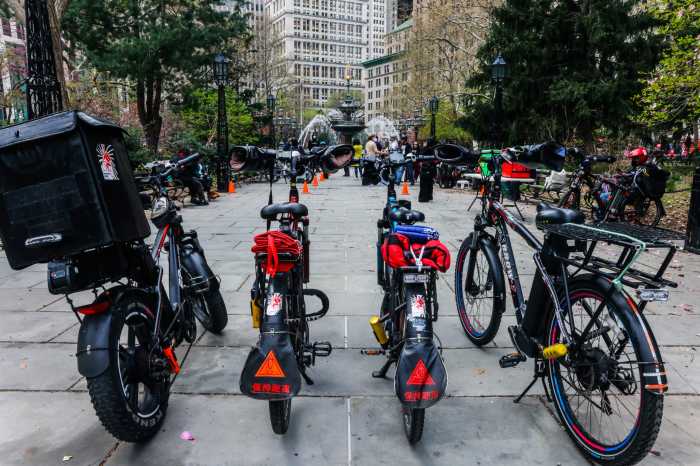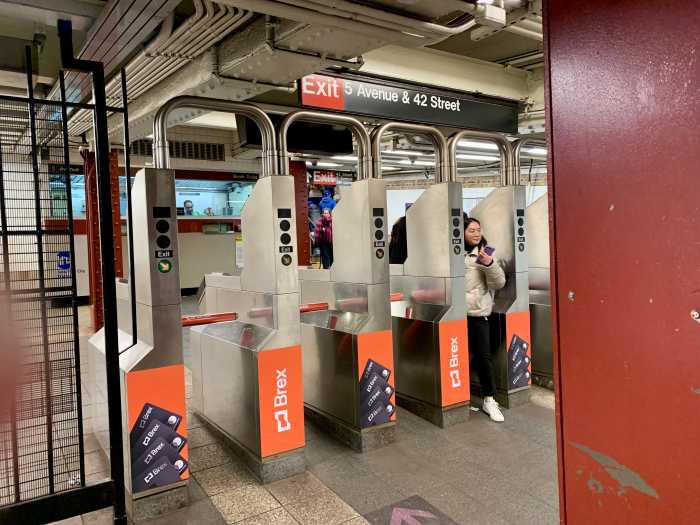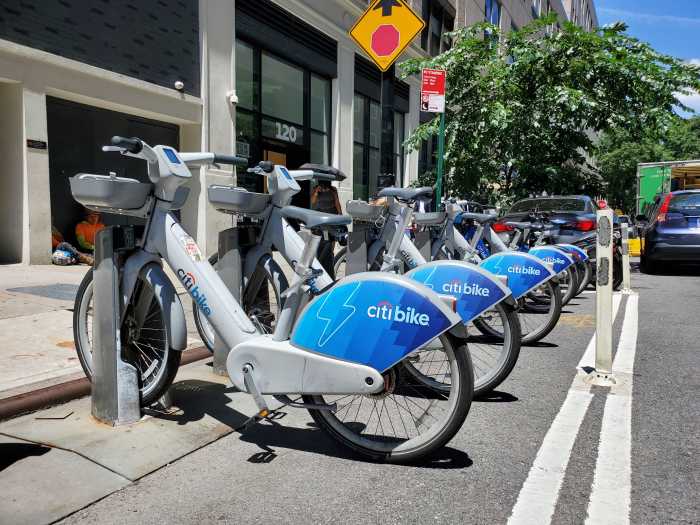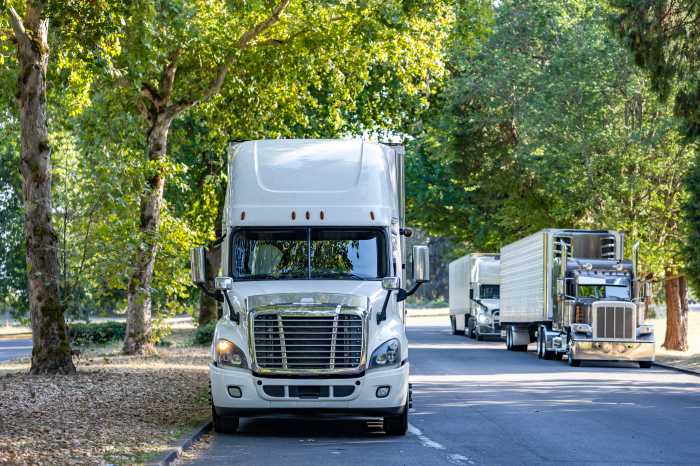The de Blasio administration on Monday unveiled plans to tackle the city’s congestion crisis, offering an agenda that left elected officials and advocates wanting more.
The administration is simply “tinkering around the edges” of improving gridlock, as one lawmaker put it, while dancing around questions regarding support for road tolling, which transit experts believe could have a formidable impact on the city’s crawling crosstown streets and avenues.
As a new congestion pricing proposal emerged on Monday, the administration introduced its own attempt to confront the city’s gridlock without adding road tolls or securing a great deal of new infrastructure funding.
“Without these two tools — pricing and major subway system expansion — the city is nonetheless looking at the whole range of tools that we do have at our disposal,” said Polly Trottenberg, the city’s Department of Transportation commissioner, at a City Council transportation committee hearing on Monday.
Several of the new initiatives rely on NYPD enforcement. The city wants to crack down on traffic-clogging offenses like blocking the box, double parking and the blocking of bus and bike lanes. It also aims to create a new electronic placard system to better ticket those city workers who abuse their parking privileges.
Other strategies revolve around managing curb space and confronting the challenging fact that more than 90% of goods come to the city via truck. There are goals to create new “progressive” parking meter rates and extended meter hours and to get a total of 1,300 businesses on board with off-peak deliveries.
But City Council members on Monday maintained that anything short of congestion pricing that would de-incentivize driving wouldn’t make much of a difference.
“It feels like [it’s] tinkering around the edges in some ways — that they’re important things but they’re not transformational things,” Manhattan Councilman Corey Johnson said. “I support congestion pricing because I really feel like we need to do something.”
At a separate event Monday, the mayor leaned back on a familiar foil: Albany.
“I can tell you very squarely that there’s not going be any consideration of congestion pricing so long as the current political alignment in Albany exists,” Mayor Bill de Blasio said at a news conference in Queens. “So I’m not putting time and energy into something that is not going to happen.”
There are other ways the city must address gridlock, de Blasio said.
The same 6,000 miles of city streets are tasked with managing a population that has increased by 360,000 between 2010 and 2016, to 8.5 million; an economy that has added 500,000 jobs since the Great Recession; and a tourism industry that serves 61 million city visitors, up by 68% since 2000.
At the same time, trips from ride-hail apps increased from about 100,000 daily in June 2015 to 400,000 per day in March 2017, as companies like Uber and Lyft stormed into the city. But even that surge hasn’t meaningfully impacted traffic as much as the city’s rapid growth, according to Trottenberg, who appeared pessimistic that the city’s transit needs would be met.
“The city and region are unlikely to see the level and pace of transit investment necessary to meet growing travel demand and make a meaningful dent in congestion,” said Trottenberg, also an MTA board member. “Were the MTA positioned to truly meet that need, the agency would be completing major projects like the Second Avenue subway every few years.”
As the subway system continues its meltdown, experts believe congestion pricing can fund mass transit while also alleviating street gridlock by de-incentivizing people from driving into the heart of Manhattan.
“We have a transportation crisis. Our subway and bus system is a mess; our roads and bridges are a mess; and we can’t afford small solutions,” said Alex Matthiessen, the campaign director of Move New York, which has continued to propose a tweaked version of former Mayor Michael Bloomberg’s road tolling plan. “[Congestion pricing] can do an enormous amount to reinvigorate our roads, our bridges, our bus system.”
Despite the city’s long held belief that state legislation would be needed to toll roads, Move NY insists the city can do so itself, thanks to a 1957 state law.
The coalition unveiled Monday what it’s calling its “Home Rule” version of congestion pricing, where two-way $2.75 tolls would be added to the four East River bridges and along 60th Street for drivers heading into and out from Manhattan’s central business district. Unlike the organization’s previous congestion pricing plan, “Home Rule” wouldn’t lower tolls of other MTA crossings, which are controlled by the state. Still, the plan would provide about $1 billion annually in funding for transportation infrastructure. It wants the council to act independent of the mayor.
“You show me a single New York driver who can give me a credible argument as to why they can’t contribute $2.75 to drive their vehicle, with all the impacts that it has on the rest of the city, when every other commuter who travels into the central business district — except for pedestrians and bicyclists who are crossing the bridges — every other commuter is paying $2.75 or more,” Matthiessen said.




































